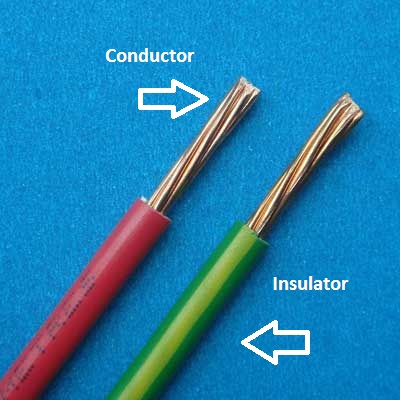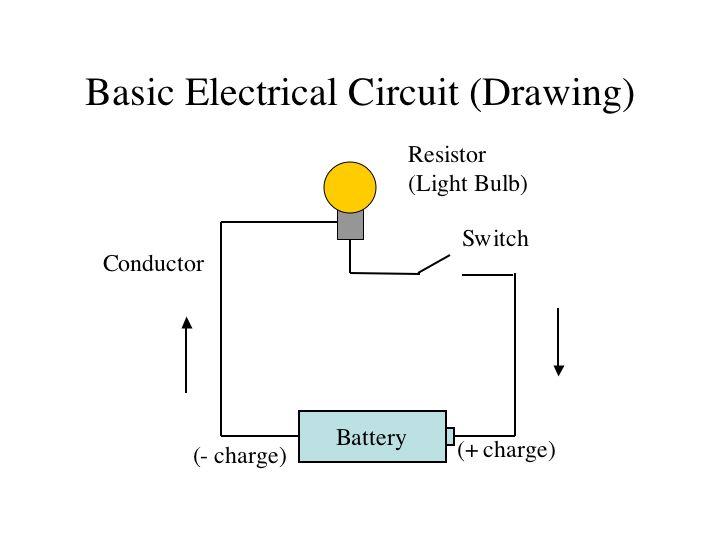& Construction

Integrated BIM tools, including Revit, AutoCAD, and Civil 3D
& Manufacturing

Professional CAD/CAM tools built on Inventor and AutoCAD
9 min read
Disclaimer: My mom is absolutely awful when it comes to using anything in technology. She still calls her WIFI router a rotor, for reasons unknown to me. But I don’t bother correcting her anymore, just for the extra laughs in life. So I figured, what better person to try to explain electricity to than my mom? After all, they say if you can’t account for a concept simply enough that a five-year-old can understand, then you really don’t get it at all.
Electricity is everywhere you look, and everywhere you don’t look. It’s in your body, cruising through your electrical system and your brain, allowing you to read this blog. And looking externally, you’re bound to find something within arm’s reach that was made possible thanks to electricity.
Electricity is the phantom of the physical world, much like the wind, doing unseen things in the background, away from our physically-focused eyes. And it’s this reason alone that I find electricity so darn fascinating. As Bill Nye once said, “We live in an electric world.” So here it is, for anyone that has ever wanted to know what electricity is, we explain it so simply, that even your mom can understand.
Electricity can be broken down into some very simple, natural elements. The biggest of which is the atom. Atoms are everything. They’re in your morning latte, in your hair, and even your toilet. When atoms get packed together, they form the physical things that make up our world. To make an atom, you need three essential ingredients – a proton, neutron, and electron.

Confused? Remember that first school dance you attended in elementary school? That lovely period in time when boys were terrified of girls, cowering in the corner to avoid getting cooties. It’s a great analogy to understand how an atom works. Here’s the cast we’ll be working with
As this trio hits the dance floor, electricity starts to happen. Neil and Polly start doing an awkward slow dance together, trying to avoid each other’s feet. This neutral neutron and positive proton dance happens at the center of every atom you look at; they’re inseparable.
Across the room is Mr. Tice, weaving his way through the crowd with a disapproving look on his face. Mr. Tice is a negatively charged electron, never staying attached to one proton and neutron couple for long before going off to investigating the next potential crisis on the dance floor.
This dance right here is electricity in its most basic form. If you can imagine the camera on this scene looking from a top-down perspective, you’d see groups of Neils and Pollys huddled together, with teachers moving about from group to group. It’s all about those electrons, protons, and neutrons, fit snugly together in an atom!

If you wanted to strap a definition onto electricity, you could say that it’s the flow of electrical charge. But how in the world does electricity flow? And what is an electrical charge?
Electrical charge is just a fancy term for the attraction of opposites. Remember our electrons and protons from earlier? They’re negatively and positively charged. Or opposites.
At every moment of every waking hour, there’s a proton out there seeking its oppositely charged electron in the world. And here’s where the magic happens. As electrons move from atom to atom seeking out new protons, you create what’s called a current. And this is how electricity is made, from the simple movement of electrons.

In electronics, you’ll see these electrons dancing in copper wires all over the place, flowing down a wire to power your smartphone, laptop, car, and the virtually unlimited number of gadgets and gizmos that we have at our disposal these days. But wait, you might be asking why electricity only flows through certain things. You can’t power your phone in a bowl of Jello, and electricity comes from that very specific hole in the wall, so what’s the deal?
Electrons are a selective bunch, and you won’t find electricity flowing through just any kind of material. In the world of electronics, this is called conductivity. You likely have a smartphone, so this should be pretty easy to understand. Pull out your charging cable, it’s made out of rubber, right? That was done for a very particular reason.
Rubber, like other materials including glass, plastic, and even air, are called insulators. These insulators serve a super important purpose; they keep you from getting shocked or electrocuted! Electrons don’t like insulators, and won’t waste their time flowing through them.
There isn’t just rubber inside that charging cable of yours. Inside you’ll find a strand of copper wire. This material, including others like silver and gold, are called conductors. Electrons love to fly down conductors, zipping right into your smartphone to get your battery back up to a full charge.

Now you understand that electricity is made up of atoms, and it’s the flow of electrons that makes electricity. But where exactly does electricity come from? It doesn’t just magically appear.
While electricity is floating all around us, turning it into a form that’s usable for making your espresso machine or water heater work is another matter altogether. First, you need some kind of fuel source. Just like you use gas to power your car, you need to gather some natural resources including coal, gas, wind, or energy from the sun to feed the power plants that make your electricity.
Regardless of what kind of resource you use, the result is all the same, to power giant turbine, which is a huge spinning machine with a set of magnets and copper inside. Within this turbine, a magnet goes round and round, sending a bunch of free electrons down a massive copper wire.

All of those electrons then travel miles down electric power cables, winding up at your home to be used however you please. Now how does all of that electricity actually bring all of our electronics to life?
If you ever plan to tinker with electronics, then you’ll only be dealing with one type of electricity – current electricity. This is the kind of electricity that comes out of the wall socket in your house, providing the needed juice to power your appliances, computers, lights, and so on. So how does all of this current electricity make your stuff work? Through the magic of a circuit.
A circuit is just a fancy name for a complete path. Think of it this way – electrons need to be able to flow in a continuous loop without any interruption. Otherwise, things like your fridge or laptop would shut off and not work. Remember all the times you’ve flick a light switch on and off throughout the day? You’ve been working with a circuit for years! By flicking the switch on, you’re providing a complete path for electrons to flow into your light bulb and out the other side.
Or maybe you just tossed a new pair of batteries into your Xbox One controller? That’s another circuit at work, with the battery acting as the power source for the circuit. Circuits can get pretty darn complicated, but here’s a really simple example to show you how it all works to power a lamp with a battery:

As you can see in the image above, all of the negatively charged electrons from our battery want to get to the positive side of the circuit to unite with their beloved protons. To make this journey, the electrons first have to flow through a switch.
But wait, there’s a problem! The circuit isn’t flowing right now because the switch isn’t turned on. By pressing this switch down as show below, the circuit is now complete, and electrons can continue flowing, finally turning on the lamp, and uniting with their beloved, positive protons.

A quick side note – in the circuit above we have what’s called Direct Current (DC) at work, where the electrons only flow in one direction. There’s also Alternating Current (AC), where electrons flow back and forth in alternating directions. We’ll be covering all of this in detail in another blog post!
Here’s what we covered:
Current and Circuits. Lastly, we learned about the type of electricity you’ll deal with in electronics, called current electricity. This current electricity flows in a complete path, called a circuit, to power all of your gadgets at home!
There’s electricity, in a nutshell. Hopefully, it all makes sense now. We even challenge you to show your mom this blog post to see what she thinks of it! If this is just the beginning of your journey into electronics, then welcome aboard. Learning about this stuff is a strange and fascinating journey, and if you ever wanted to be considered a wizard amongst your group of friends, then you’re in the right place.
Start your first your circuit today. Download EAGLE for free.
By clicking subscribe, I agree to receive the Fusion newsletter and acknowledge the Autodesk Privacy Statement.
Success!
May we collect and use your data?
Learn more about the Third Party Services we use and our Privacy Statement.May we collect and use your data to tailor your experience?
Explore the benefits of a customized experience by managing your privacy settings for this site or visit our Privacy Statement to learn more about your options.